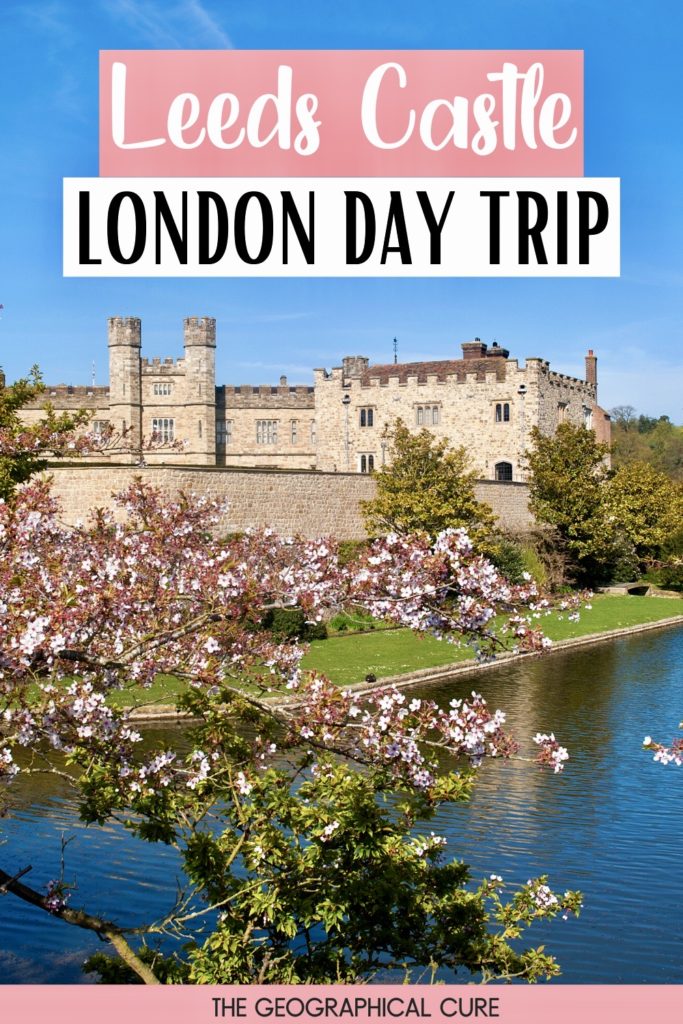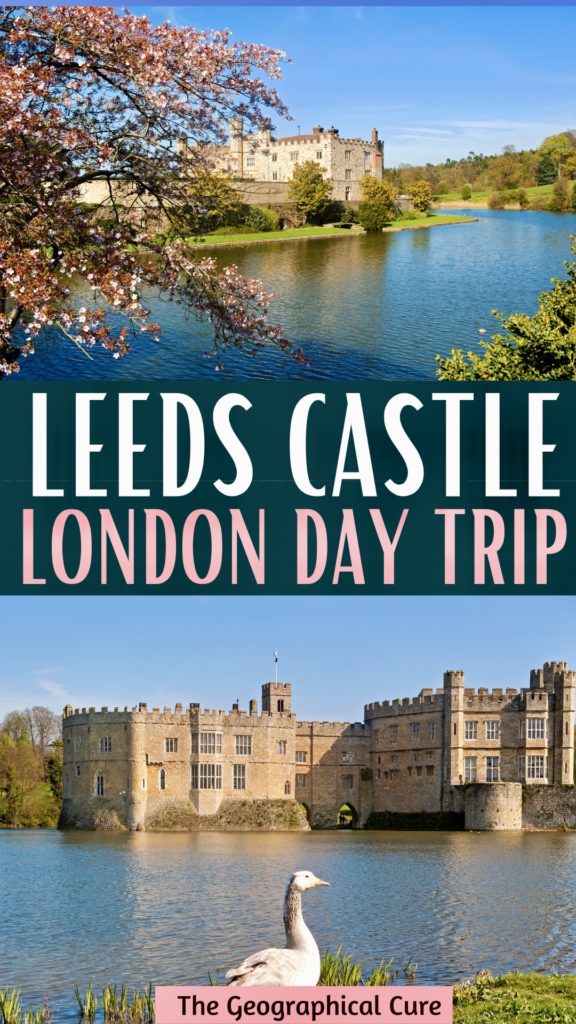Leeds Castle is one of Britain’s oldest and most beautiful castles. The castle has a picturesque island setting on a lake in the wooded countryside of Kent.
So idyllic is the storied castle that it could be the inspired set of a period movie. You can almost imagine a maiden leaning from a tower waving a silk handkerchief to her swashbuckling knight.
Leeds’ history is no less romantic. Leeds Castle has been a Norman Stronghold, a Royal Palace, and the stately home of an American heiress.
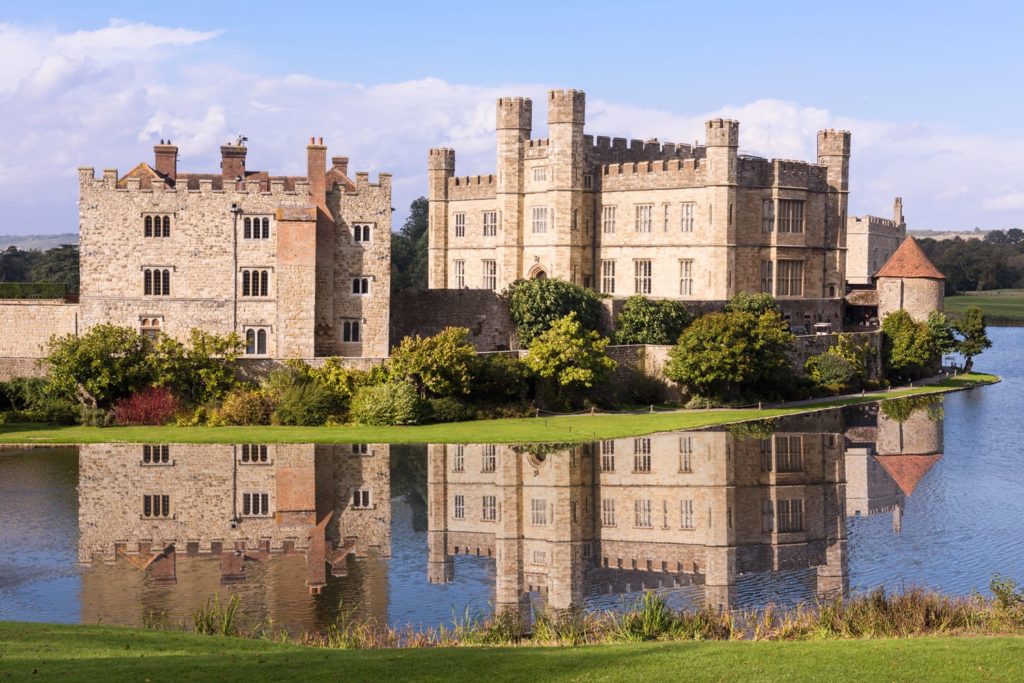
The castle was a royal residence until Tudor times and known as the “Ladies Castle.” Seven queens lived at Leeds.
The castle was also a favorite abode of the infamous Henry VIII, who shuttled his ex-wife Catherine to live there permanently after their divorce.
Short History Of Leeds Castle
No guide to Leeds Castle would be complete with a mini history of the iconic landmark. And it’s a very colorful history that extends over 1,000 years.
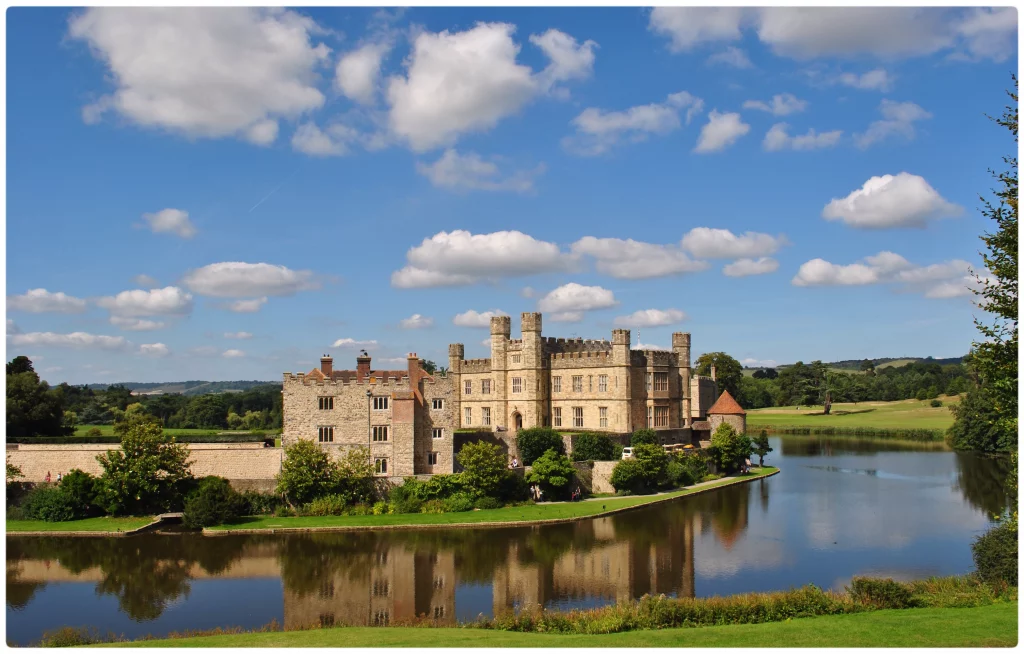
1. Norman Stronghold
In 857, a fortress was built on the site during the reign of King Ethelbert of Kent.
In those days, defense mattered more than good looks. The first building was probably more grim than glamorous.
The first historic record is listed in the Domesday Survey of 1086. It records that the “Manor of Esledes” was owned by Odo the Bishop of Bayeux, the half-brother of William the Conqueror.
William later gifted the fortress to Hamon de Crevecoeur. It remained in his family for 175 years.
In 1119, Hamon’s son Robert built the first stone castle on the site consisting of a keep and gatehouse. Today, only the original Gloriette Tower remains from that era.
In 1139, Leeds was a focal point in the battle between King Stephen and Empress Mathilda, who both claimed the throne of England. After a successful siege, it fell into Stephen’s hands.
The castle was next seized by Henry III during the revolt led by Simon de Montfort. Henry then gifted it to his sheriff, Roger de Leybouene. Roger, in turn, created the spectacular water defenses.
2. Residence Of Royal Queens
Leeds later earned the sobriquet the “Ladies Castle” for the succession of Medieval and Tudor queens who lived there and owned the castle.
The first queen to move in was Eleanor of Castile. She was the deeply beloved wife of Edward I.
The king made grand scale renovations to the property. The most significant addition was a chapel in the Gloriette Tower.
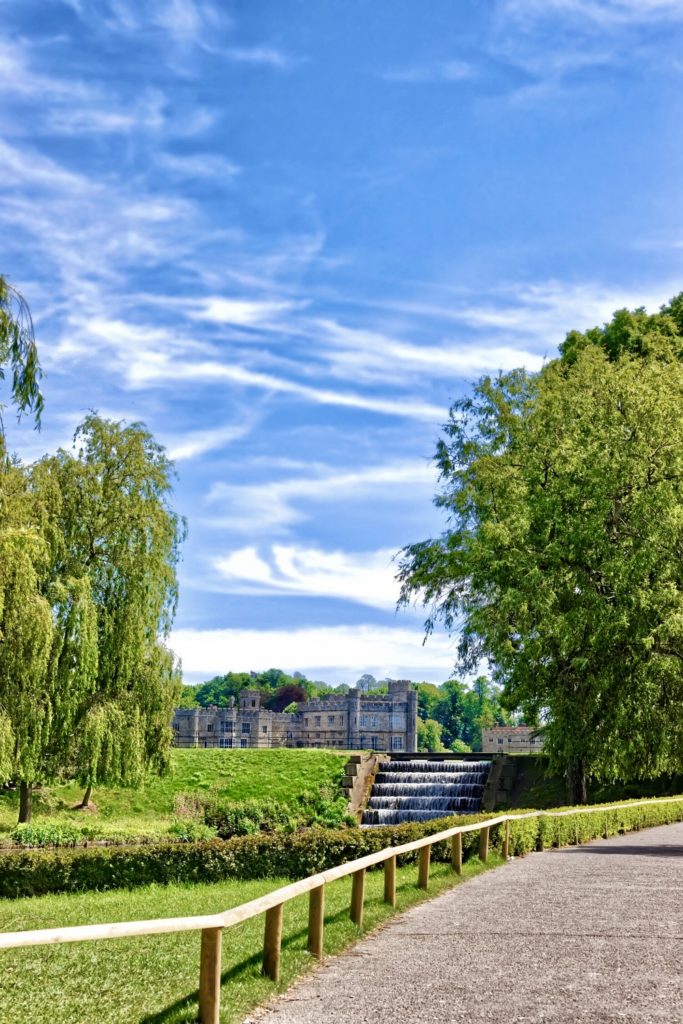
After Eleanor’s death, Edward went into mourning and had daily chants, prayers, and masses held in the chapel in honor of his beloved Eleanor.
He went on to marry Margaret and the royal couple honeymooned in the castle. (One can only imagine what she thought of the chapel goings ons.) Within weeks, Edward deeded her the castle.
The third queen to own Leeds Castle was Isabella, the wife of Edward II. Nicknamed the “She-Wolf,” Isabella simply confiscated the castle when the owner unwisely refused to give her shelter.
Her son, another Edward, improved the fortifications and upgraded the royal apartments.
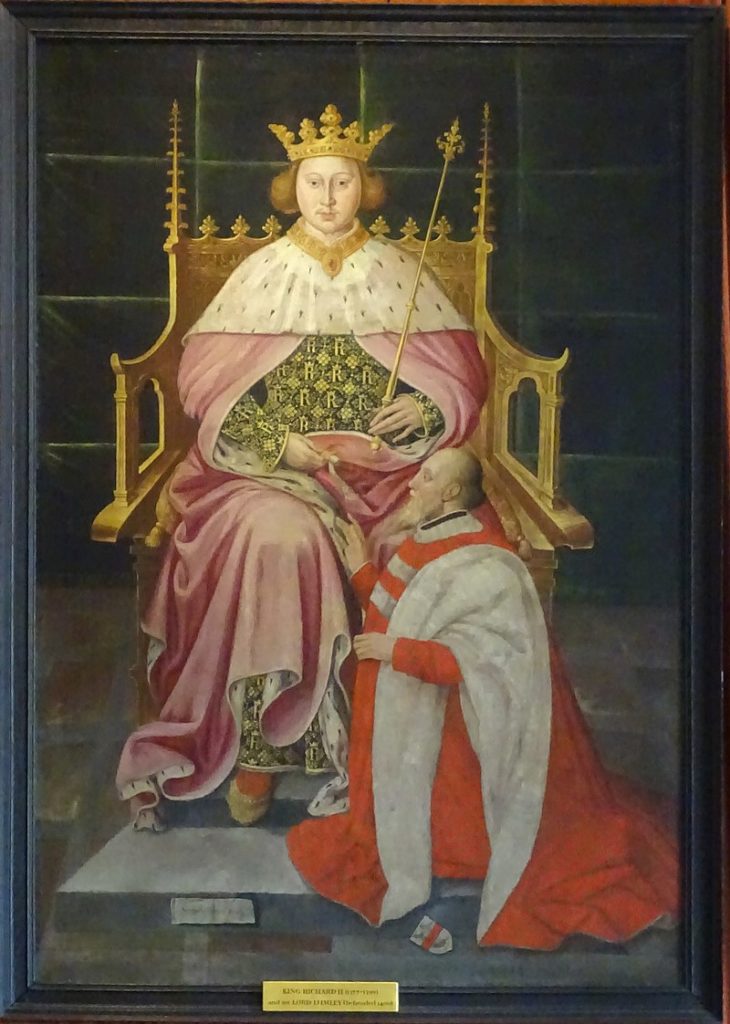
The next queen to own Leeds was Anne of Bohemia, the young wife of Richard II. But, soon enough, Richard was deposed and succeeded by the usurper Henry Bolingbroke, who became Henry IV.
As was tradition now, Henry gifted the castle to his wife Joan of Navarre, the fifth queen to own the castle. When she was charged with witchcraft, the castle went to Henry V’s widow, Catherine of Valois.
Her tenure at Leeds, like so many before her, was short. She was imprisoned for entering into a secret marriage with a commoner, Owen Tudor.
And, yet, her son Edmund Tudor would go on to sire the first Tudor king, Henry VII. The seeds of the Tudor dynasty were planted at Leeds.
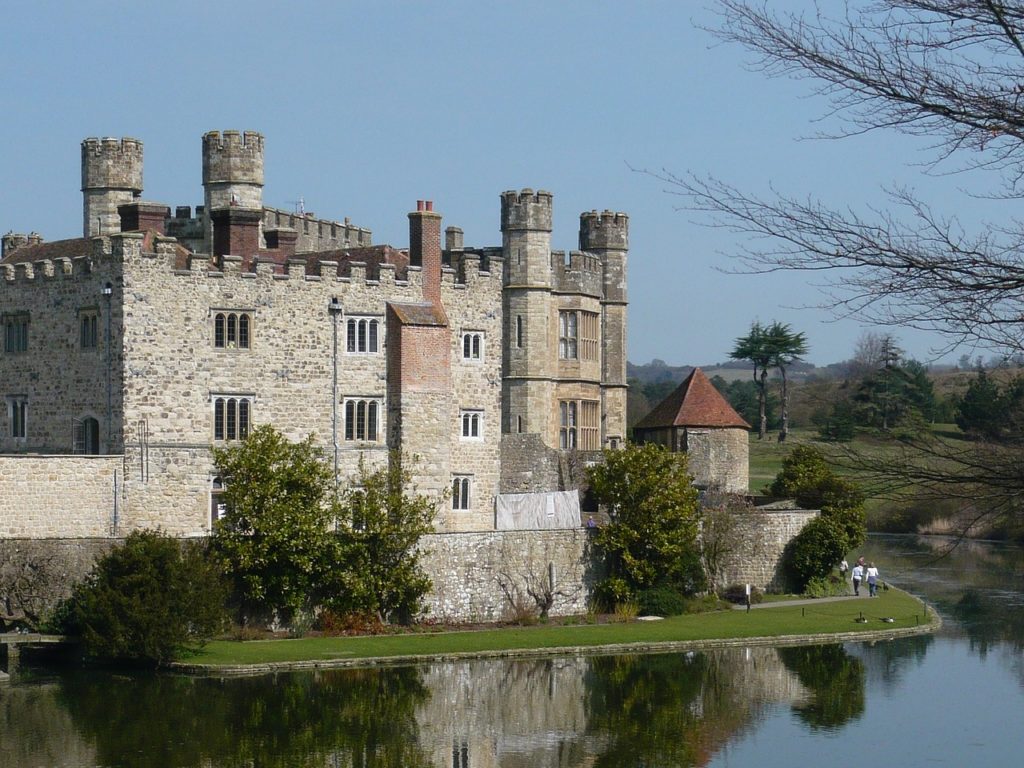
3. Tudor Palace
Henry VIII also loved Leeds Castle, not surprising for a monarch with lavish tastes and expensive habits.
In keeping with tradition, the castle was principally for the use of Henry’s first wife, Catherine of Aragon. No other queen would ever lay claim to Leeds again.
With Henry’s deep pockets, he lavished improvements on it, transforming Leeds from castle to royal palace. He added grand reception rooms, suites of rooms in the Gloriette, the graceful Maiden’s Tower, expensive glass, and fireplaces.
Henry VIII frequently visited Leeds Castle. His most well documented stay was an overnight on May 22 1520 with an entourage of 5,000 people.
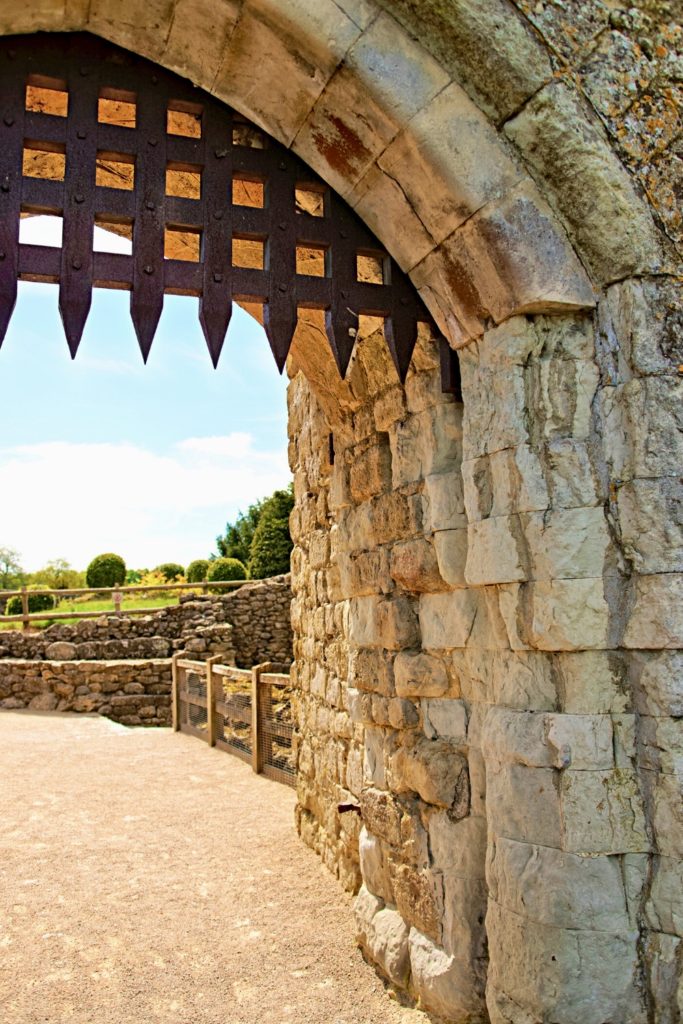
Henry was on his way to meet Francis I of France to improve diplomatic relations. This meeting became known as the Field of Cloth of Gold, for its opulent setting and “portable palaces.”
After divorcing his first wife Catherine, he sent her off to live in Leeds Castle permanently.
Henry was the last of the royal owners of Leeds. In 1552, Henry bestowed the castle on Sir Anthony St. Leger. Leeds continued to evolve, this time from a royal palace to a stately manor home.
It was held in private hands for centuries, including by the Culpepper, Cavendish, and Fairfax families. But by the mid 18th century, the castle was in poor shape and parts of it were in danger of collapse.
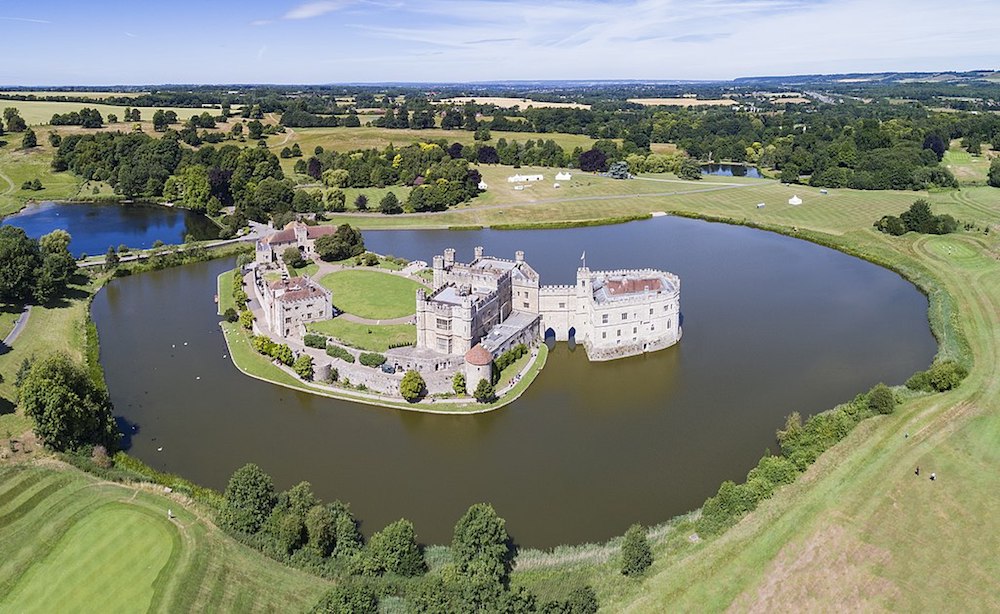
4. Jacobean House
In 1821, Wykeham Martin demolished the main house and replaced it with one in the Tudor style. The resulting New Castle was finished in 1823.
Alas, castles don’t come cheap. Restorations bankrupted the family.
In 1926, American heiress Olive Paget (later Lady Baillie) purchased the castle. She saved it from centuries of neglect and restored it to medieval perfection.
Lady Baillie hired the best architects and artistic advisers in Europe and America, including Stéphane Boudin, Armand-Albert Rateau, and Russell Page.
Together, they restored the ancient castle in French fashion and transformed the Gloriette into a Gothic fantasy.
In 1974, upon her death, Lady Baillie bequeathed the castle to the Leeds Castle Foundation, a private charitable trust. The foundation opened the castle to the public in 1976 and operates it to this day.
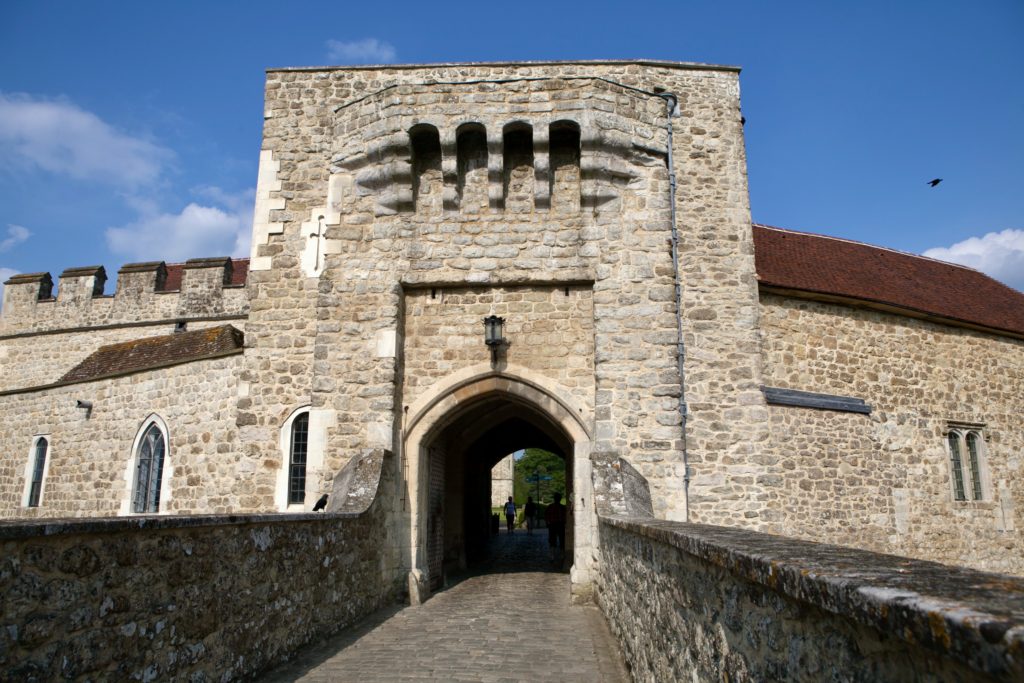
Guide To Leeds Castle: What To See
There’s so much to see and do at Leeds Castle it could keep you busy for a whole day, if you are so inclined.
You’ll be dazzled by its pristine landscaping, tasteful period furniture, and collection of medieval memorabilia.
1. Gatehouse
You enter the castle through the Norman Gatehouse, which dates from the 12th century. Formerly the constable’s hall, today you’ll find a gift shop.
You’ll also find the brand new “Queen with Means” experience. Launched in July 2022, it’s a cinematic light and sound show that immerses you in the world of the castle’s seven queens.
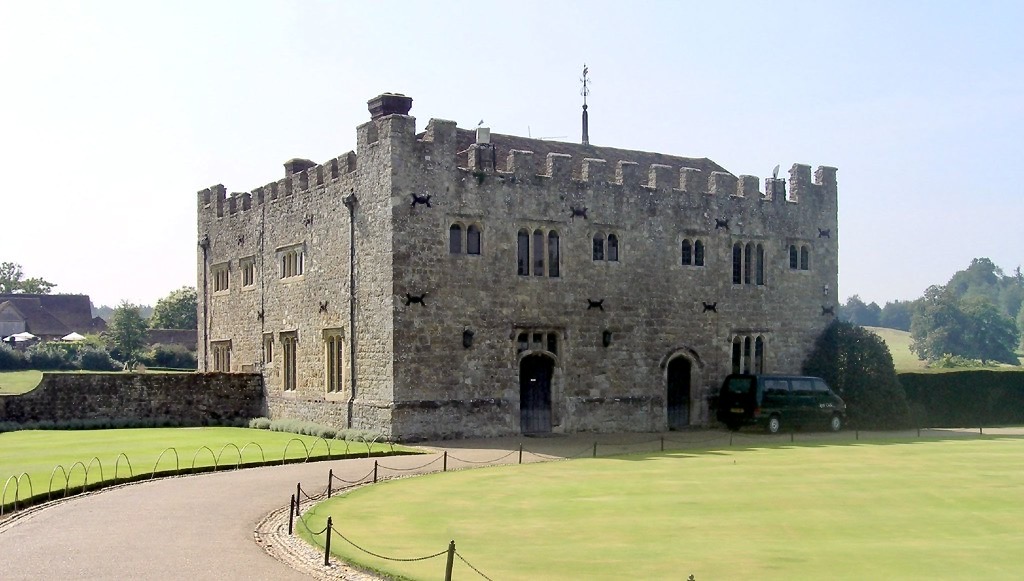
2. Maiden’s Tower
The Maiden’s Tower is a fine later Tudor structure also known as the “Square Tower.” It’s a separate building from the New Castle and the Gloriette.
The square tower was rebuilt by Henry VIII and used to accommodate the queen’s ladies in waiting. (This would have included Anne Boleyn, Henery’s second wife.)
Today, the Maiden’s Tower part of the castle’s conference facilities and parts are a bed and breakfast.
3. Norman Cellar
This is the oldest surviving part of the castle. It’s shallow pointed vault dates from the 12th century. It’s now used as a wine cellar and you can see some massive wine barrels.
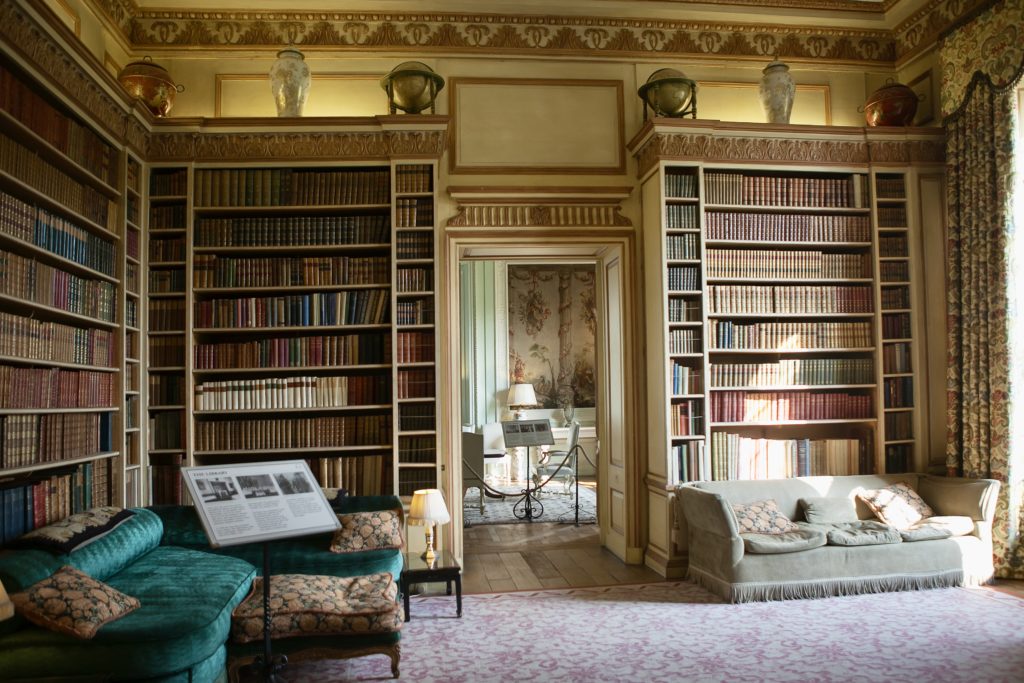
4. New Castle
Library
Formerly a medieval hall, Baillie redesigned this room into a library in 1927. In addition to 3,000 books, there are portraits of the Fairfax family who lived in the castle throughout most of the 18th century.
The walls have creamy white paneling tailed with a rich red glaze that echos the book bindings.
Yellow Drawing Room
The Yellow Drawing Room is one of the castle’s loveliest rooms. Lady Baillie used this room as a reception room.
The decorative scheme was selected by Stephanie Boudin in 1938. The room takes its name from the yellow silk walls. There’s also a tasseled panel that runs along the edge of the ceiling called a passementerie, which was restored in 2017.
Over time, the original gold silk wallpaper was light damaged and stained. It was replaced with an exact replica woven by the same manufacturers.
A painting by Tiepolo casually hangs above the fireplace.
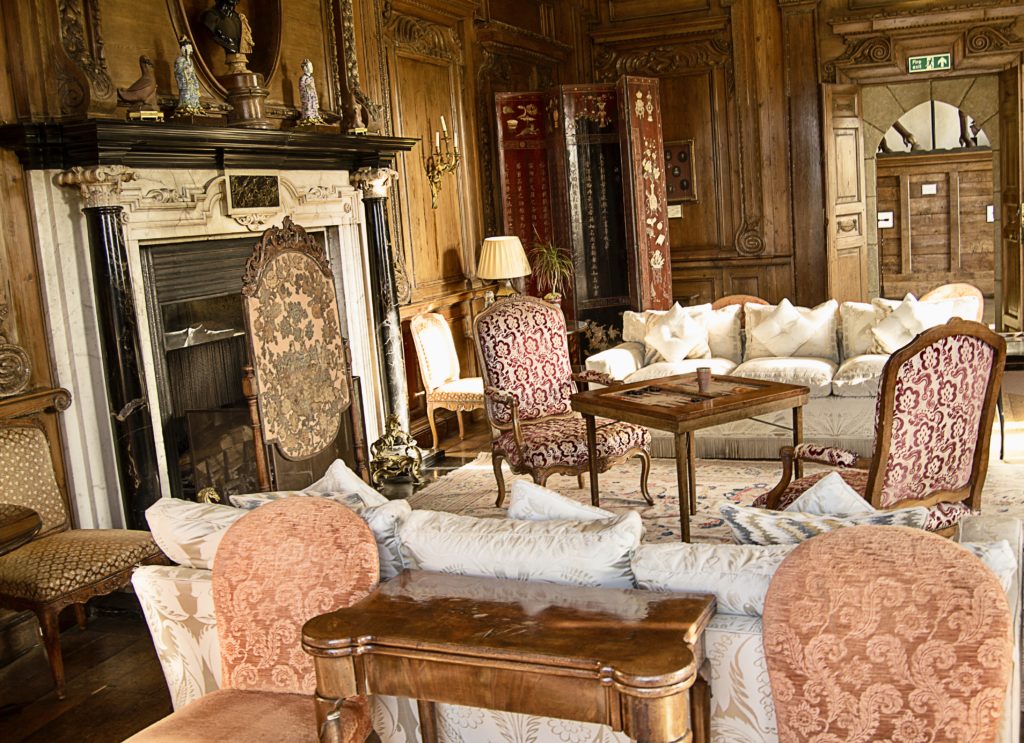
Thorpe Hall Drawing Room
This room provides visitors with a glimpse into the glamorous lifestyle enjoyed by Lady Baillie and her many weekend guests.
There is 17th century pine paneling (that was originally painted pea green!), a beautiful Italian fireplace, and a painting by Millet. Lady Baillie’s writing desk has also been restored and sits at the window.
Dining Room
The creamy-colored dining room was also designed by Boudin in 1938. It combines both French and English decorative styles. The walls are a muted green.
Pieces from Lady Bailie’s porcelain collection are on display on the walls at both ends of the room. The mahogany dining table contrasts with the Louis XIV style chairs, which are painted white.
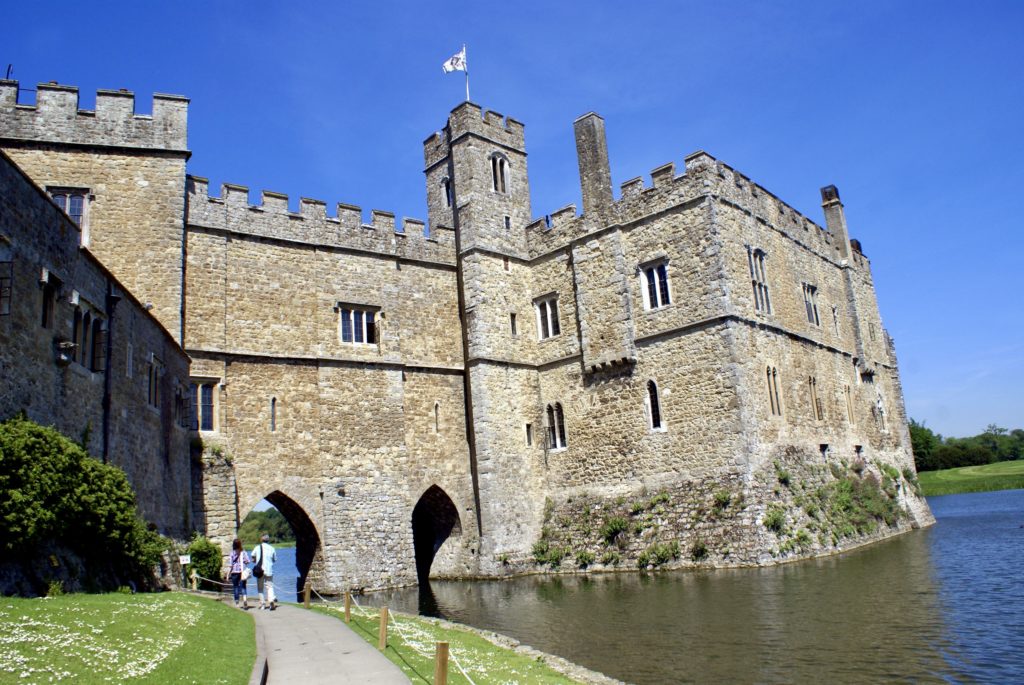
5. Gloriette
The moated Gloriette was built in the late 13th century for Eleanor of Castile on the site of the original Norman keep.
It was the last stronghold if enemies penetrated the castle and was considered impregnable.
The Gloriette is more or less intact and in the same form today. There’s a central courtyard, great hall on the ground floor, and a series of sumptuous royal apartments.
Lady Baillie recreated the Queen’s Bedroom as it would have appeared in the 15th century. There are green damask walls and a luxurious oversize four poster bed decked out in ruby colored ben linens.
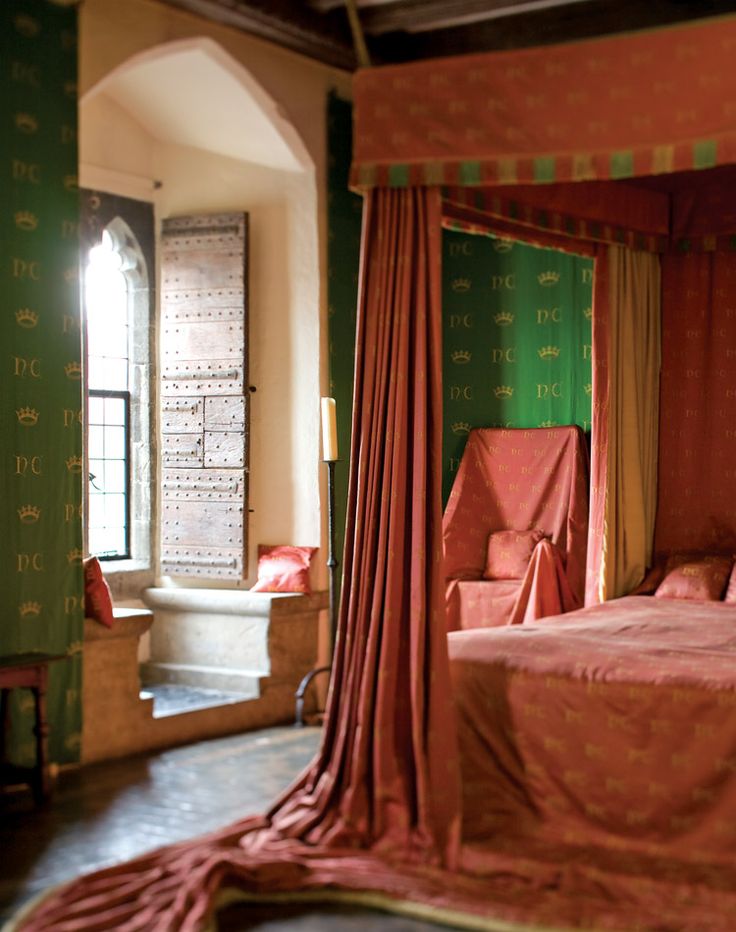
You can see the intertwined initials and lover’s knot of Henry V and his wife Catherine de Valois.
The Queen’s Bathroom was reconstructed from surviving contemporary images. The bathtub is enclosed by a fine white curtain suspended from a canopy. There’s also a semi-circular chimney piece.
The Queen’s Gallery is a stately room with wooden beams, an ancient fireplace, and Brussels tapestries.
You’ll see marble busts of Tudor monarchs — Henry VIII, Mary I, Elizabeth I, and Edward VI. A small statue of St. George and the Dragon, an early Italian Renaissance piece, sits on the table.
The central courtyard of the Gloriette dates from the 1290s. It was completely refurbished in the 1920s and has a 16th century half timbered screen.
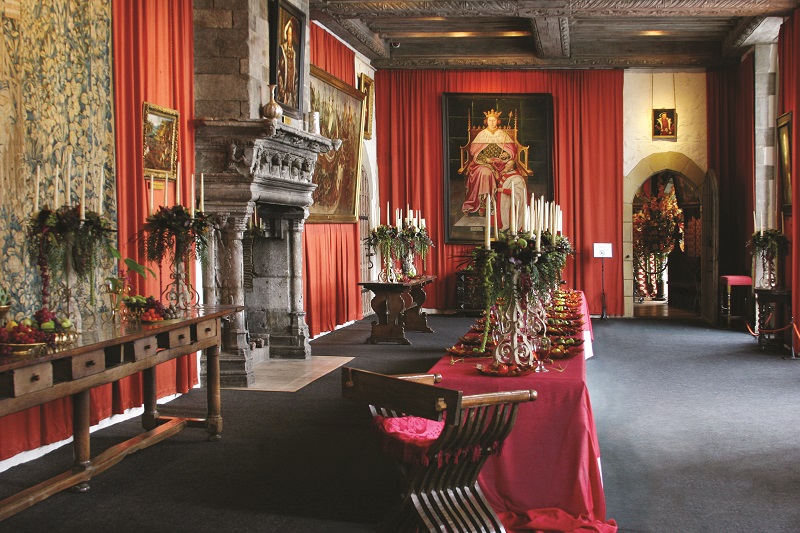
The Banqueting Hall in the Gloriette was created for the famous visit of Henry VIII in 1520. At 75 feet long, it’s the largest room in the castle.
Although dimly lit, it’s a grand room with a superb original Tudor carved wood ceiling and ebony floor. A medieval stone sculpture of Saint Barbara stands by the window.
Baillie added a fanciful Caen stone fireplace. Above it is a portrait of Henry VIII by John van der Banck.
You can also admire a 16th century tapestry, wooden sculptures, and other portraits. There’s also a copy of the Field of Cloth of Gold painting, the original of which is in Hampton Court Palace.
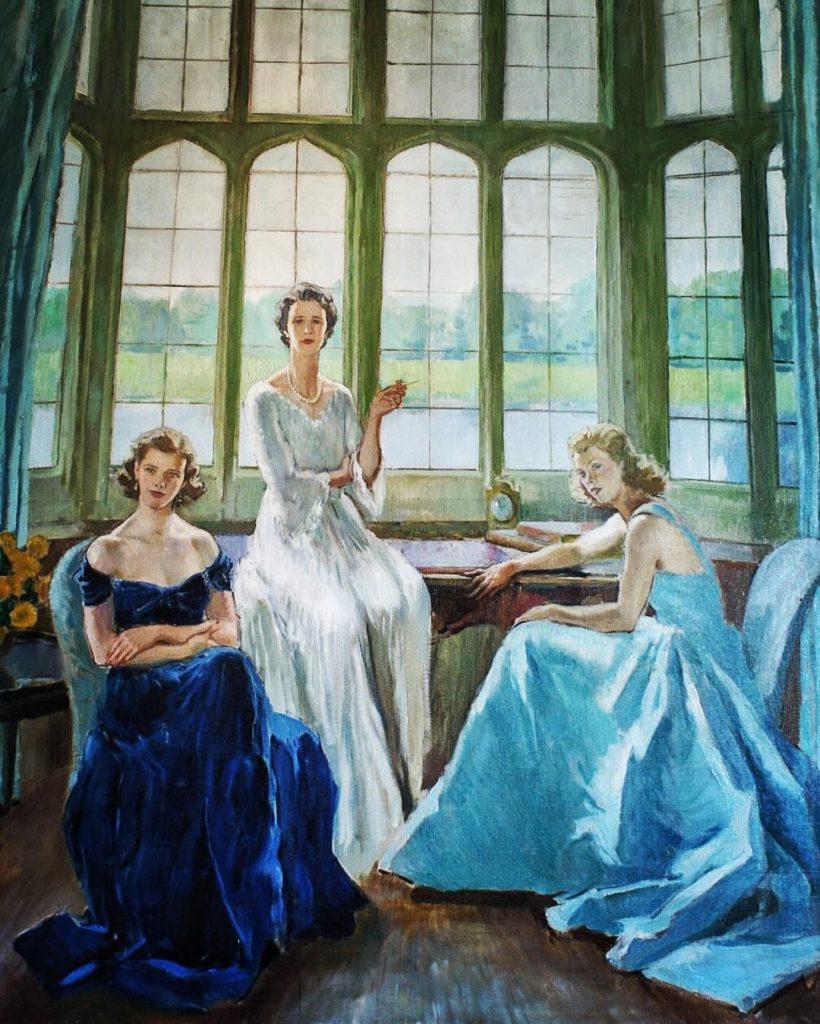
There’s also the the chapel built by Edward I. A large 15th century tapestry depicting the Adoration of the Magi hangs above the altar.
Next, you ascend a spiral staircase. On the upper floor, you’ll find a seminar room, boardroom corridor, and boardroom. There are also two bedrooms — Lady Baillie’s Bedroom and Catherine of Aragon’s Bedroom.
Lady Baillie’s Bedoom was created by Armand-Albert Rateau in 1927-20. It’s opulent, and yet still light and feminine.
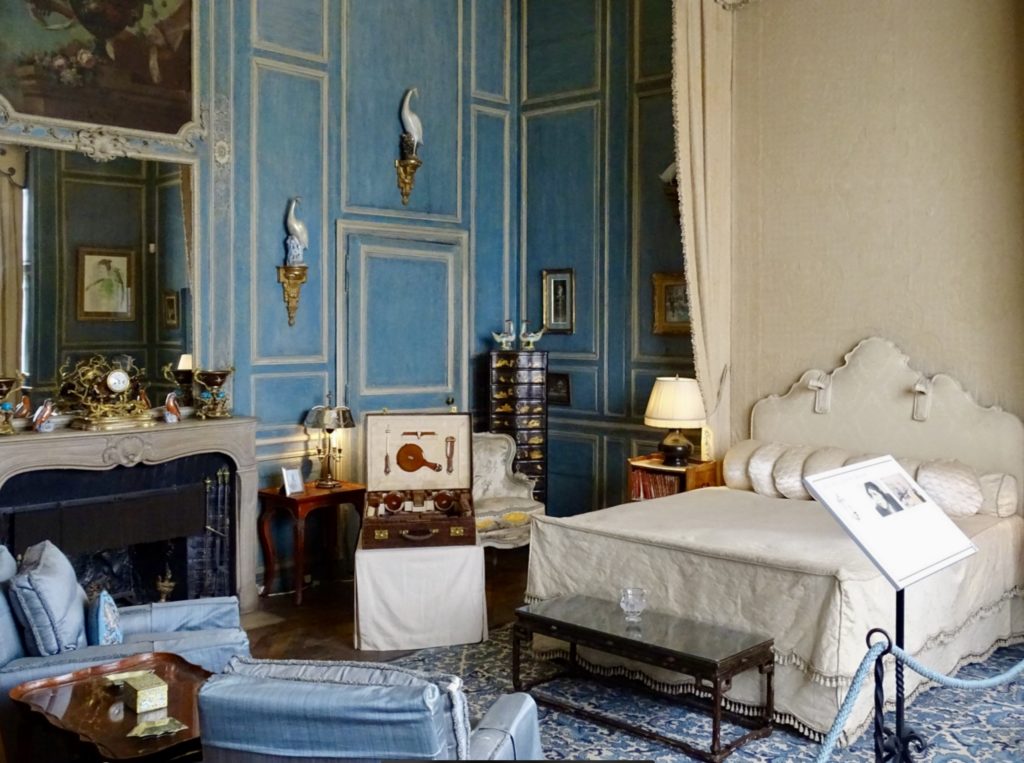
Her French regency style bedroom is dominated by cornflower blue paneling, designed by Stephane Boudin. On the walls are porcelain birds from the Chinese Qianlong period.
The Catherine of Aragon bedroom was once the bedroom for Henry VIII’s wife Catherine. Rich damasks lavishly cover the walls and furniture.
It continued to serve as a bedroom in the 19th and 20th centuries. It then was converted in to a boudoir for Lady Baillie.
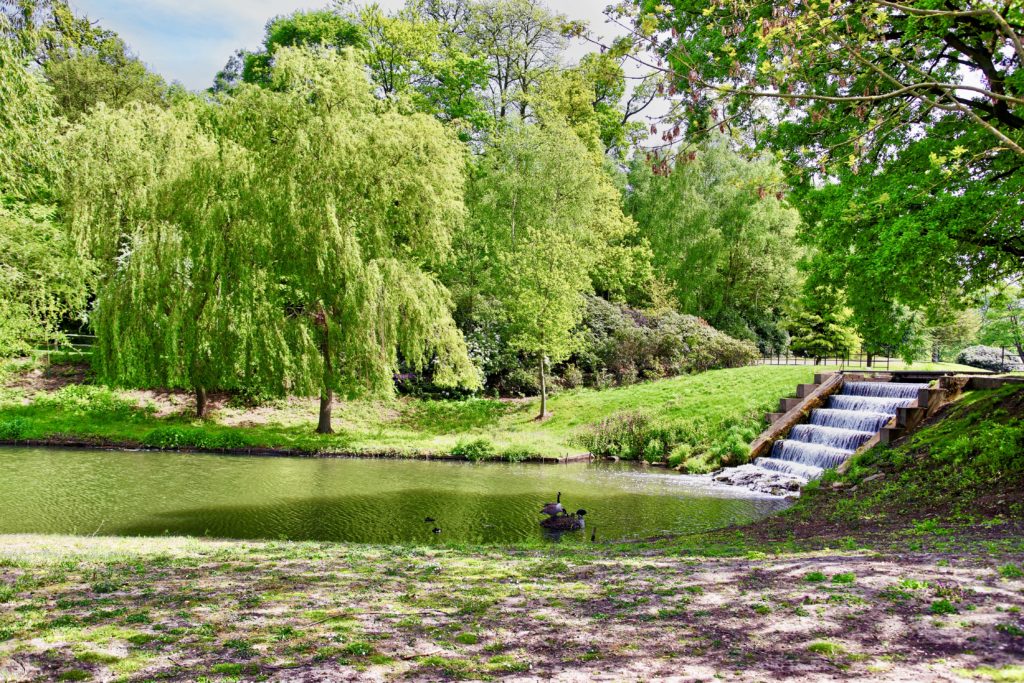
6. Leeds Castle Gardens
The castle is set on 500 acres of park land, landscaped by Capability Brown.
You can visit the Culpepper Garden, the Princess Alexandra Gardens, and the Lady Baillie Mediterranean Garden. The latter offers dramatic terraces and views across the pond.
7. Leeds Castle Grounds
Outside, there are plenty of things to keep kids entertained. Don’t miss Leeds 12 hole Castle Adventure Golf Course, the Maze, Birds of Prey Centre, and the Knights’ Stronghold Playground.
Maze
Leeds’ maze takes the form of a dense geometric topiary. It leads up to a viewpoint overlooking the park.
You exit the maze through an underground grotto where you can see the legendary giant Typhoes, a rock sculpture. The grotto may seem chilly. It’s built of rocks, bones, shells, etc.
Next to the maze is the spot where you can try your hand at archery, for a small extra charge. If it’s not open when you are there, you can see the birds in the Birds of Prey Centre.
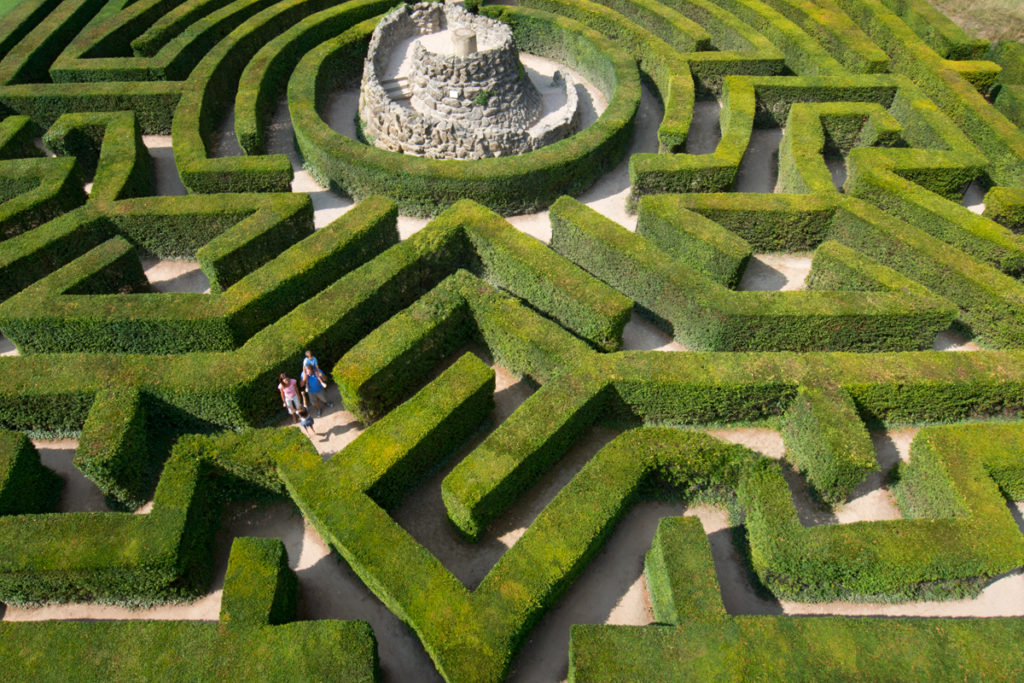
The Duckery
The Duckery is a 6 acre space that’s home to a number of rare and endangered ducks, wild birds, and black swans. Lady Baillie was the first person to import the black swans to Britain from Australia. Visitors help feed the ducks at 4:00 pm each day.
The Aviary
The Aviary contains over 100 exotic species of birds from all over the world. With the loss of natural habitats, the Aviary plays an important breeding and conservation role. It’s dedicated to Lady Baillie, who was an amateur ornithologist.
The Dog Collar Museum
This is a one-of-a-kind museum and the only museum of its type in Britain. The collection consists of over 100 dog collars from fearsome (medieval spiked collars) to ornate (silver collars).
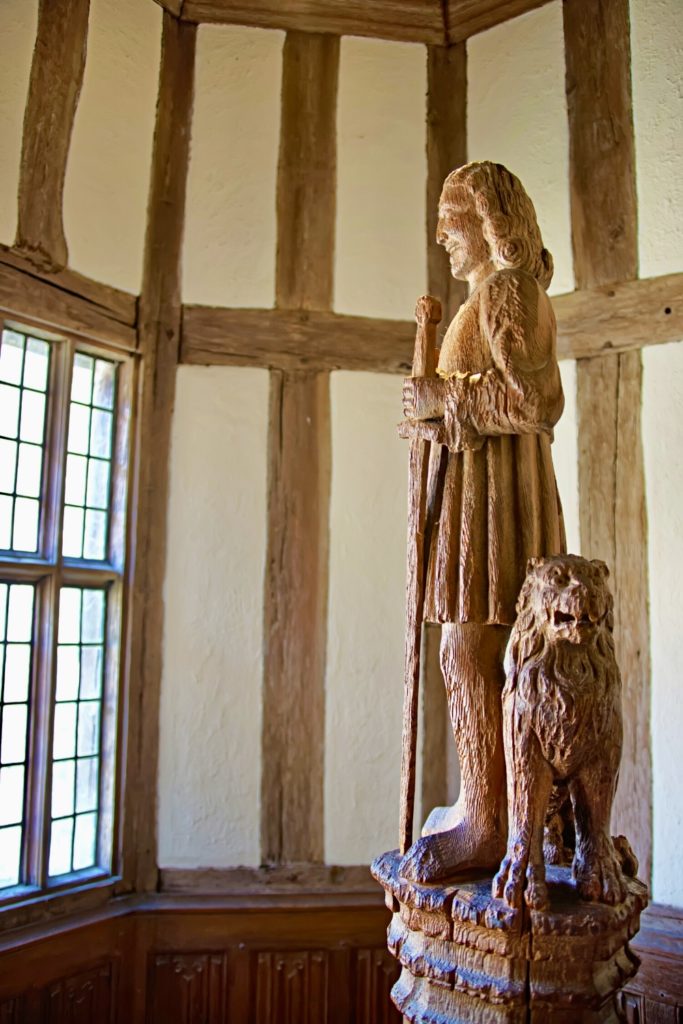
Tips For Visiting Leeds Castle
Here are some must know tips for Leeds Castle, so you have the complete guide to visiting.
1. How To Get To Leeds Castle
Address: Broomfield, Maidstone ME17 1PL, UK. The castle is in the county of Kent, not in the more well known city of Leeds in West Yorkshire.
By car: Leeds Castle is about a one hour drive from London. Parking at the castle is free.
By Train: Frequent trains run from London’s Victoria Station to nearby Bearsted Station and take about one hour. From there, a shuttle bus service run by Spot Travel is available from the station from April to September.
Once you arrive at Leeds Castle, you can simply walk the grounds. There is also a train and ferry to take you around for a small extra fee.
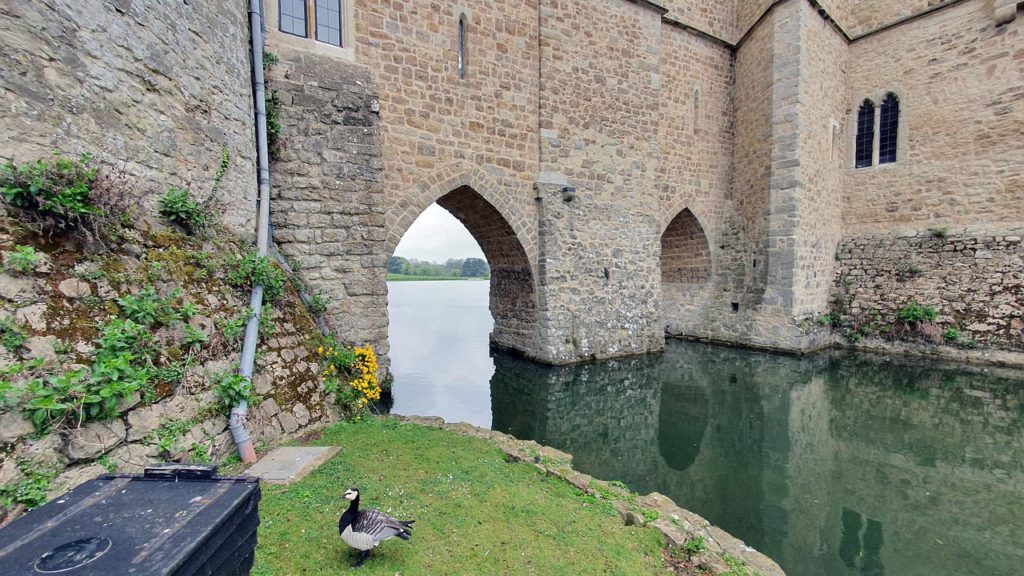
2. Leeds Castle Tickets & Guided Tours
In high season, you should be sure to pre-book a skip the line ticket for the castle. It’s a bit pricey, but good for an entire year. If you buy your ticket 48 hours in advance on the castle website, there is a small discount.
There are also guided sightseeing tours from London that stop at Leeds Castle. Here are some options:
- 10 hour tour combining Leeds, Canterbury, and Dover
- 11 hour tour combining Leeds, Canterbury, and Greenwich
- 8 hour private tour to Leeds and Canterbury
3. Leeds Castle Hours
Click here to see the hours for the castle, gardens, and other attractions, which vary by season.
You might consider visiting Leeds during the Christmas season when the castle is decorated to the hilt. There is usually a Christmas market and the kids can visit Santa.
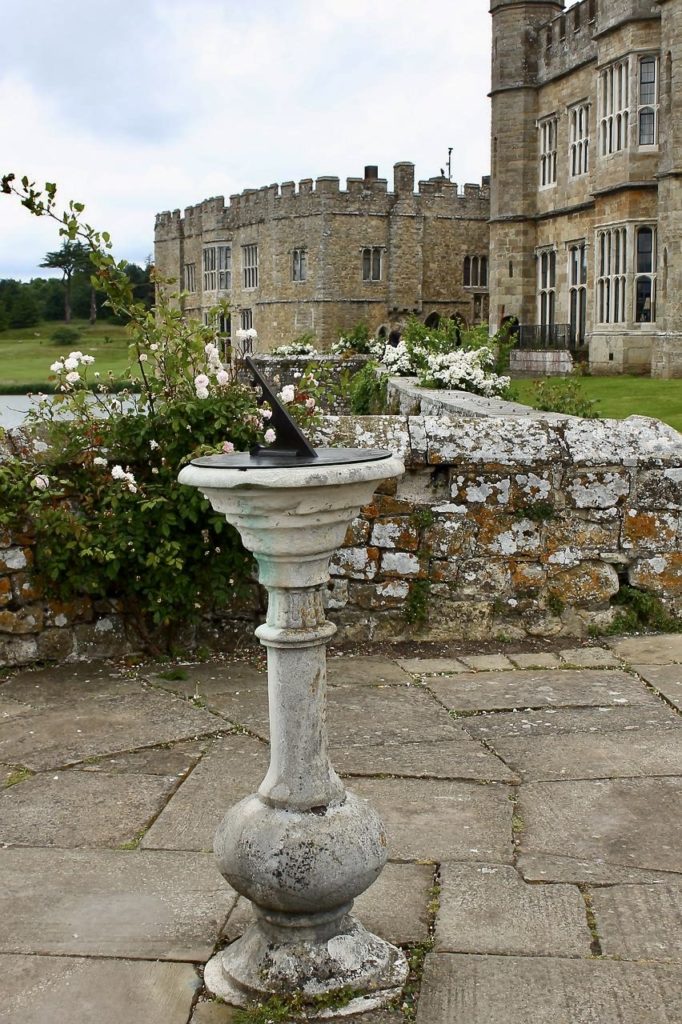
4. Where To Stay Near Leeds Castle
Want to stay overnight in a former royal castle? You can, and it’s a unique experience where you’ll feel like royalty.
Leeds Castle has traditional cottages and bed and breakfasts available to book. These include:
- Weir Cottage ( 1 bedroom)
- The Oast (3 bedroom)
- Knight’s Cottage (3 bedroom)
- Keeper’s House (5 bedroom)
- Battel Hall (5 bedroom)
- Stable Courtyard (bed & breakfast)
- Maiden’s Tower (bed & breakfast)
- Holiday Cottages
The Maiden’s Tower won the AA award for 2017’s Unique B&B of the year. Each of the five rooms is named after a queen who has stayed at the castle and are decorated in Tudor style.
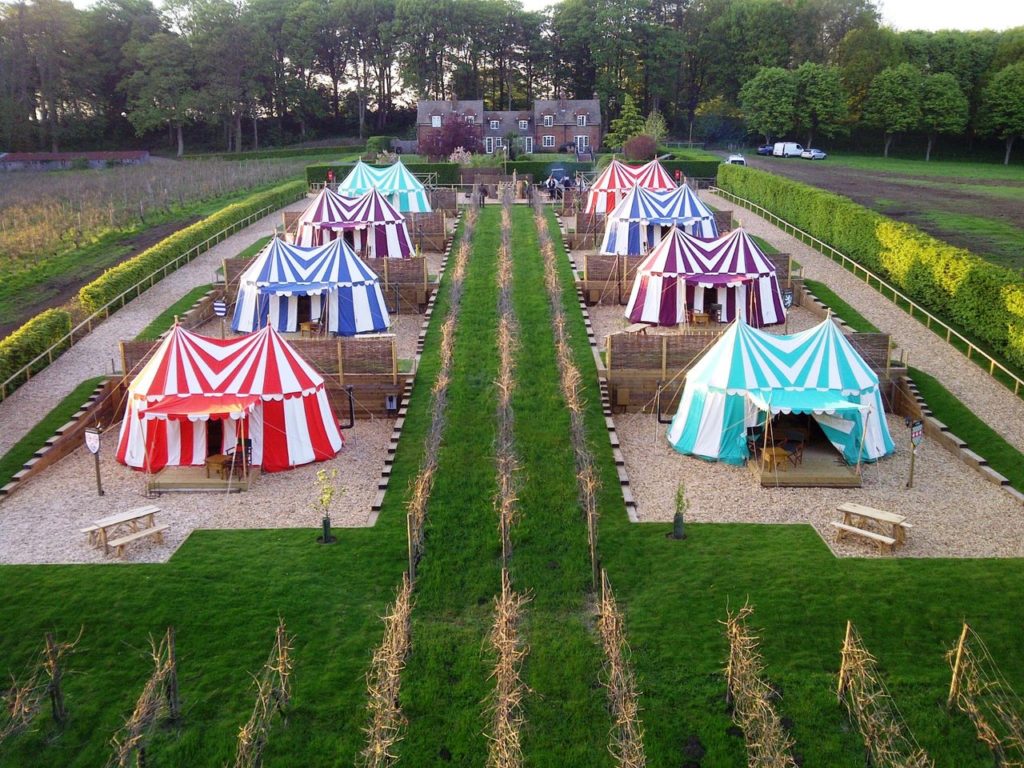
Would you rather go glamping? Leeds Castle offers a luxury glamping experience. You can stay in a four poster bed under a striped medieval tent.
5. Where To Eat At Leeds Castle
Leeds Castle has quite a few food options onsite.
Castle View Restaurant serves breakfast and evening meals in a renovated 17th century barn. For lunch, you can check out the Maze Cafe, Whistle Stop Cafe, or the Stable Yard Kiosks.
Another option 5 minutes away is the Dirty Habit. It’s a pub serving up locally sourced food in a historic building.
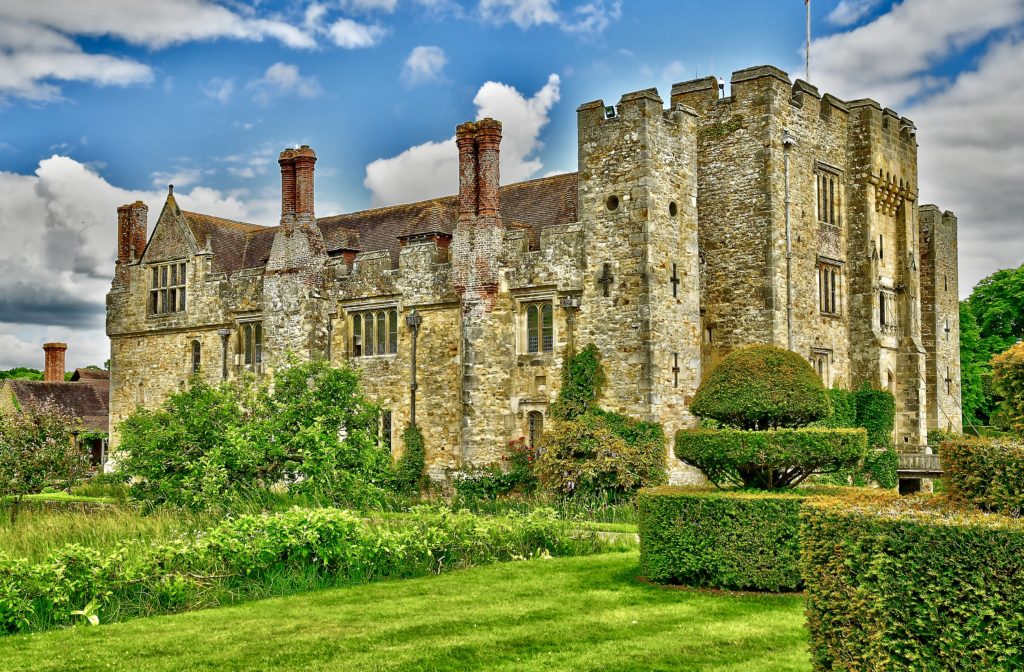
6. Places To Visit Near Leeds Castle
Want to do some castle hopping while you’re in the area? There are a few other castles less than an hour away. Except for Hever Castle, which is privately owned, the castles are included in the English Heritage Pass.
Hever Castle
Hever is a petite double-moated castle with a craggy romantic visage that’s largely unaltered by time. It’s famously linked to the ill-fated royal couple, Anne Boleyn and Henry VIII.
On a visit to Hever Castle, you can walk in the footsteps of these (and other) famous Tudor monarchs. And you can admire the castle’s medieval keep and gatehouse, Tudor rooms, original portraits, and exquisite gardens.
Here’s my complete guide to visiting Hever Castle.
- Address: Hever Rd, Hever, Edenbridge TN8 7NG
- Time from Leeds Castle: 45 minutes
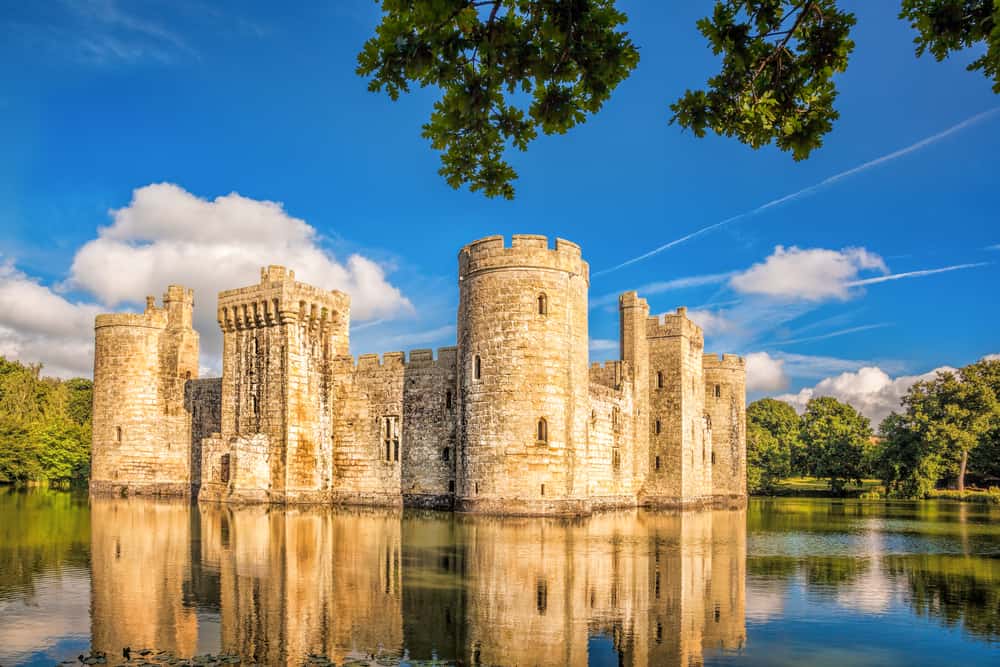
Bodiam Castle
Bodiam Castle is one of England’s true storybook castles. It’s a square fortress completely surrounded by an ultra large moat.
Built in the 14th century by the wealthy Sir Edward Dalyngrigge, Bodiam has a perfect symmetry with stout drum towers at each corner and crenellated walls.
By the 17th century, Bodiam was a romantic ivy clad ruin. The exterior was restored in the 19th century.
Address: Bodiam, Robertsbridge TN32 5UA
Time from Leeds Castle: 45 minutes
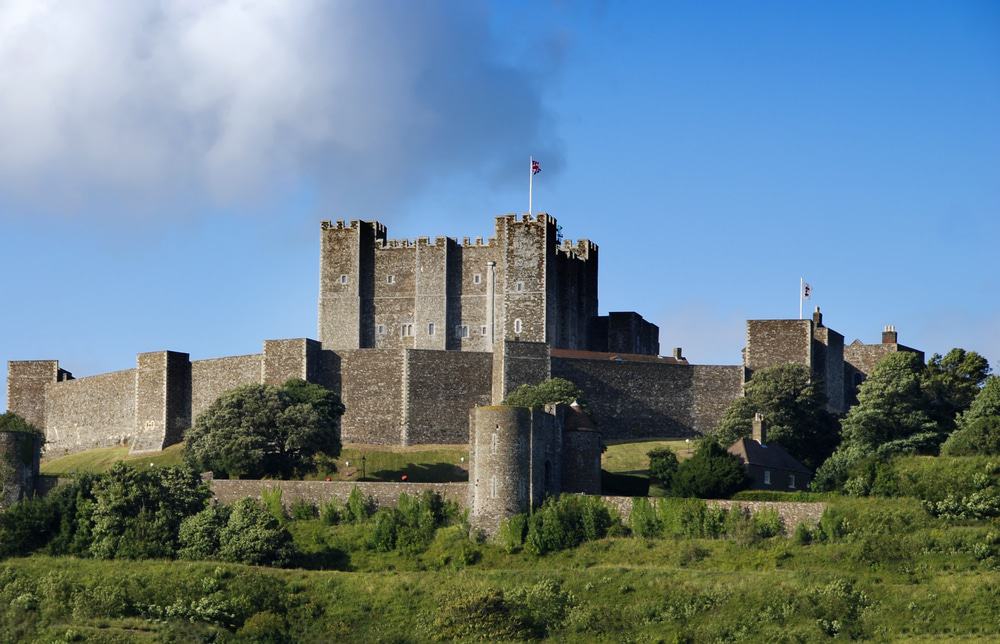
Dover Castle
Dover Castle is England’s largest castle. The castle dates from the 12th century during the reign of Henry II. Henry VII later remodeled it for artillery warfare.
The castle could take all day to explore. But the highlight is the central keep with its Great Hall, royal chambers, and private chapel.
Address: Castle Hill Rd., Dover CT16 1HU
Time from Leeds Castle: 50 minutes
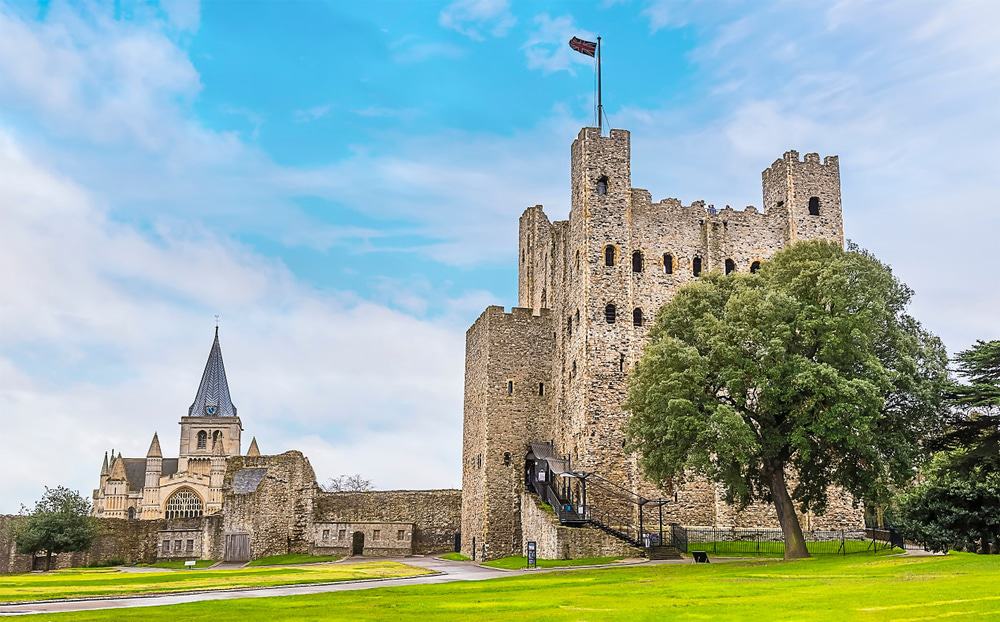
Rochester Castle
Rochester Castle has one of the best preserved Norman keeps in England. Dating from the 12th century, it’s also one of the tallest at 113 feet high.
The castle is just a shell now. You can enter the keep and, if you are game, climb the steep spiral staircase to the top of the battlements for views of the countryside.
Address: Castle Hill, Rochester ME1 1SW
Time from Leeds Castle: 20+ minutes
I hope you’ve enjoyed my guide to Leeds Castle. You may enjoy these other London and UK travel guides:
- 3 Day Itinerary for London
- 5 Day Itinerary for London
- Hidden Gems in London
- 30 Day Trips from London
- Tourist Traps To Avoid in London
- Best Museums in London
- One Day In Canterbury Itinerary
- One Day in Oxford Itinerary
- One Day In Stratford-upon-Avon
- Harry Potter Places in London
- Guide to the Tower of London
- Guide to Westminster Abbey
- Guide to St. Paul’s Cathedral
Pin it for later.

